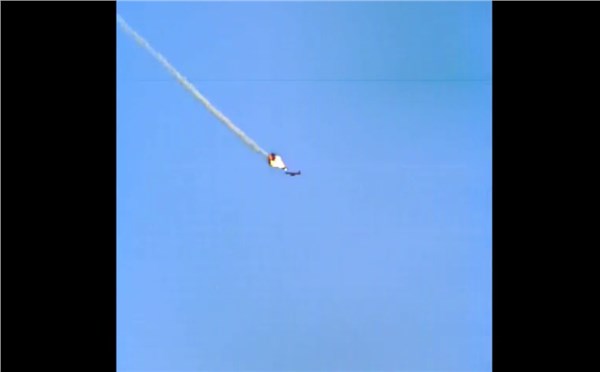Breaking news
US Army and NGC demonstrate sensors-shooters integration as network components 41711153.
|
|
|||
|
Defence & Security News - (Northrop Grumman)
|
|||
|
|
|||
| US Army and NGC demonstrate sensors-shooters integration as network components | |||
|
The US Army and Northrop Grumman Corporation demonstrated the integration of various sensors and interceptors in the destruction of a cruise missile target. The fire test took place on 12 November and validated the ability of the army to identify, track, engage and defeat targets, using sensors and interceptors from different air systems on the integrated fire control network.
|
|||
|
|
|||
 A PAC-3 interceptor missile destroys the MQM-107 drone simulating a ballistic cruise missile. (Photo: Northrop Grumman Corporation)
|
|||
|
|
|||
|
The test was a major milestone for the Northrop Grumman Co. Integrated Air and Missile Defence (IAMD). The IAMD Battle Command System (IBCS) tracked the simulated cruise missile with data being provided by ThalesRaytheonSystems Sentinel and Raytheon Patriot radars. These were provided to the Command and Control (C2) of a Lockheed Martin Patriot Advanced Capability Three (PAC-3) interceptor, which destroyed the cruise missile. The enemy missile was simulated by an MQM-107 drone, which flew a low altitude trajectory against a friendly asset, defended by an Army IAMD task force. It was comprised of a battery and battalion IBCS engagement operations centres, a Patriot radar, two Sentinel radars and two PAC-3 launchers which were connected at the component level to the IBCS integrated fire control network. Due to the low trajectory of the MQM-107, the Patriot radar could not track it. Thus, the IBCS used the data from the Sentinel radars to derive the required fire solution. The operations centre then ordered the launch of a single PAC-3 missile. The order was directed through the IBCS mission control software. The IBCS’ technological leap allows the replacement of seven legacy C2 systems. It also provides the base for networking sensors and interceptors instead of linking them. In that way, the IBCS can provide surveillance and protection of wider areas. Furthermore, being of modular architecture, it allows the integration of legacy, current and future sensors and weapons, being also interoperable with joint C2 and ballistic missile defence systems. Dan Verwiel, VP and General Manageer of Raytheon Integrated Air and Missile Defense Division said: "The technical challenge of integrating sensors and shooters that were never designed to work together – breaking them from existing systems into components for networking – is tremendous. With the successful intercept, the Army and Northrop Grumman team continues to show how IBCS is a paradigm-shifting system of systems for air and missile defense." |
|||



















